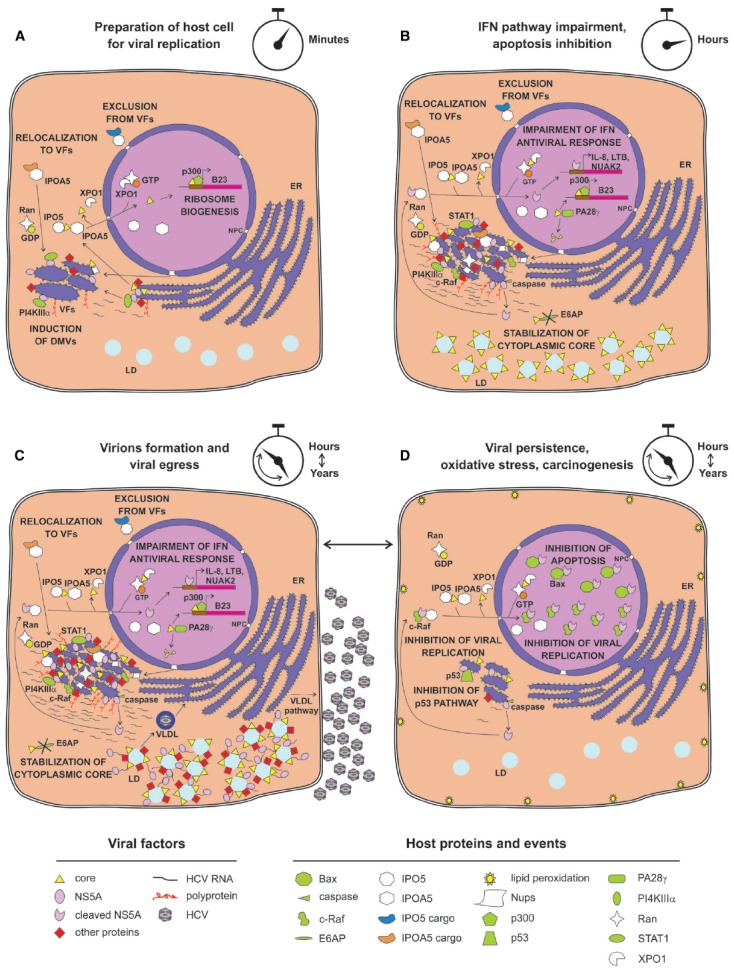FIGURE 2.

Possible relationship between nuclear transport apparatus and HCV life cycle. (A) Soon after HCV infection, core is transported into the nucleus to promote ribosome biogenesis. Newly synthesized viral proteins promote VF development, depending on NS5A-mediated recruitment of PI4KIIIα. Simultaneously, specific Nups are recruited by core and NS5A to VFs. (B) Small amounts of NS5A reach the nucleus after being processed by basal caspase activity, resulting in activation of a specific transcriptional program aimed at inhibiting IFN response and apoptosis. Core migrates to the nucleus to be degraded by PA28γ instead, thus stabilizing cytoplasmic core. (C) Viral replication progresses and specific host factors are recruited to VFs, either directly by viral proteins or indirectly by IMPs recognizing IPO5-dependent NLSs. (D) Strong viral replication and production eventually causes oxidative stress and lipid peroxidation that is detrimental to host cells, leading to activation of caspase activity and NS5A nuclear accumulation, thereby sequestering the host dependency factor c-Raf from VFs. This impairs viral replication and the pro-apoptotic factor Bax, thus promoting infected cells survival, viral reactivation, and liver damage.
